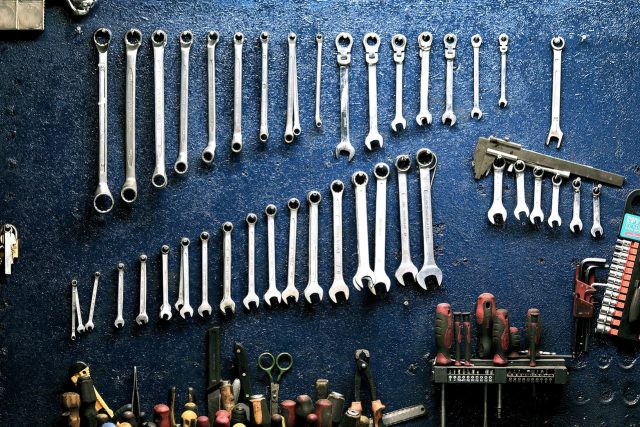
In the quest for operational efficiency within the workplace, the organisation of tools plays a pivotal role. Employing tool shadow boards and exploring various ways of organising your tools can drastically transform a cluttered workspace into a model of clarity and efficiency. This article delves into practical methods to achieve an orderly environment, focusing on the strategic use of tool shadow boards—a system that not only enhances the visibility and accessibility of essential tools but also streamlines workflow and boosts productivity. By embracing these organisational techniques, businesses can ensure that every tool has its place, thereby reducing downtime and increasing overall workplace efficiency.
Why Organise Your Business Tools?
Organising your business tools is essential for maintaining an efficient, safe, and productive work environment. This section explores the compelling reasons behind the need for such organisation and how it can impact your business operations positively.
Enhancing Efficiency
A primary benefit of organising tools is the significant enhancement of operational efficiency. When tools are properly organised and easily accessible, the time spent searching for them is drastically reduced. This efficiency leads to smoother workflow transitions and faster completion of tasks. In environments where time is of the essence, such as in manufacturing or emergency services, every second saved can lead to better outcomes and increased productivity.
Reducing Misplacement and Loss
Disorganised tools are more susceptible to being misplaced or lost, which can lead to unnecessary expenses in replacing them and potential delays in project timelines. By implementing organised storage solutions, such as tool shadow boards, every tool has a designated spot, making it much easier to track and manage tool inventories. This system not only prevents the misplacement of tools but also facilitates quick checks to ensure that no tools are missing or unaccounted for at the end of a working day.
Improving Safety
A cluttered workspace can be a hazard, posing risks of accidents and injuries. Tools left out of place can lead to trips, falls, and other workplace injuries. Organising tools not only clears walkways and workspaces but also ensures that potentially dangerous tools are stored safely and securely. This is particularly critical in environments like construction sites and workshops, where the inherent risks are higher.
Prolonging Tool Lifespan
Tools that are properly stored and organised are less likely to be damaged compared to those that are haphazardly tossed into a drawer or left on the floor. Organised storage solutions can help protect tools from environmental damage, such as moisture and dust, which can degrade the tools’ functionality over time. This care not only extends the lifespan of the tools but also maintains their performance, ensuring that they are always ready for use when needed.
Fostering Workplace Morale and Accountability
A well-organised tool system promotes a sense of responsibility and pride among workers. When tools are organised and each person is accountable for returning tools to their designated spots, it builds a culture of respect and care for shared resources. Additionally, a tidy and orderly workspace can significantly boost morale, making the workplace more enjoyable and fostering a positive team spirit.
Utilising Tool Shadow Boards
One of the most effective ways of organising your tools is through the use of tool shadow boards. These boards are designed to hold specific tools in designated spots, marked out with shadows or outlines in the shape of the tools. They offer several benefits:
Visibility: Each tool has a specific place, making it easy to quickly see what is available or missing.
Accessibility: Tools are readily accessible to all who need them, reducing downtime.
Accountability: The clear layout helps maintain organisation because it is obvious when a tool is not returned to its place.
Implementing tool shadow boards involves outlining each tool on a board and creating a designated spot for it. This can be done using materials like foam or painted outlines on pegboards.
Identifying Essential Tools
Determining which tools are essential is a critical step in the organisation process. Essential tools are those that are most frequently used and are crucial to your daily operations. To identify these:
Monitor which tools are used daily and by whom.
Ask team members about the tools they consider indispensable.
Evaluate the impact of each tool on your workflow efficiency.
Once identified, these essential tools should be the most accessible and possibly have duplicates to prevent workflow disruption.
Other Effective Ways of Organising Your Tools
Besides using tool shadow boards, there are other strategies that can help in organising tools:
Categorisation: Group tools by type or function. This can be particularly helpful in larger workspaces.
Digital Tracking: Use inventory management software to keep track of tools, especially those that are costly or used infrequently.
Regular Audits: Conduct regular checks to ensure all tools are in their designated places and in good working order.
Conclusion
Transforming clutter into clarity by organising tools not only enhances business efficiency but also boosts morale and fosters a culture of responsibility and care. Employing systems like tool shadow boards and identifying essential tools are foundational steps towards achieving a more productive and safe work environment.
FAQs
We’ve put together some of the most frequently asked questions, which we hope will help with any further queries.
How often should I audit my tool inventory?
Conducting a tool audit quarterly is recommended. However, for high-traffic or larger workspaces, more frequent audits may be necessary.
Are tool shadow boards suitable for all types of businesses?
Tool shadow boards are versatile and can be beneficial for any business that uses physical tools regularly, including manufacturing, automotive, and even culinary businesses.
What should I do if space for a tool shadow board is limited?
In smaller spaces, consider using vertical wall space or compact, custom-designed boards that accommodate your most essential tools.
How can I ensure all employees adhere to tool organisation practices?
Regular training and clear communication about the importance and benefits of tool organisation are key. Additionally, involving team members in the setup process can increase adherence to these practices.













